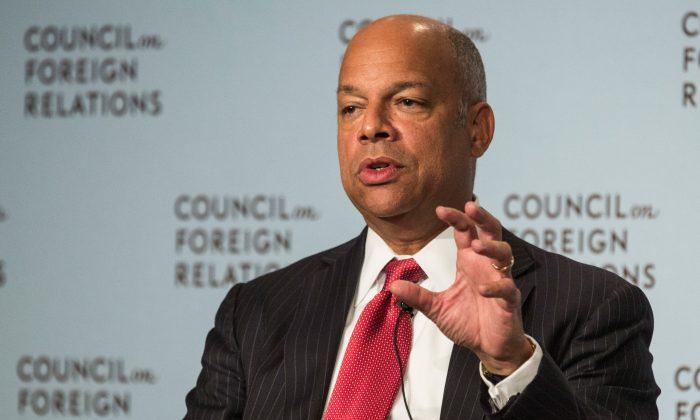NEW YORK—New York companies will likely be working more closely with local research universities in the near future. A new report released Monday gives recommendations on how to increase innovation in technology through closer cooperation between New York companies and research going on at New York universities.
The report calls intellectual property “the raw material that leads to the creation of companies, jobs, and wealth.”
At the New York Stock Exchange on Monday, Governor David Paterson received the final report of the “Task Force on Diversifying the New York State Economy through Industry-Higher Education Partnerships.”
The report calls for greater communication and cooperation between universities and industry with specific recommendations for programs on university campuses and umbrella agreements for industry access to intellectual property. It also calls for greater access to state capital to bridge the gap in turning concepts into revenue generating ventures.
The goal is to stimulate economic growth by utilizing the state’s research resources to stimulate the innovation sector and diversify New York’s economy. The report specifically calls for focus on health care and life sciences, energy, nanotechnology, and agriculture.
According to the report, New York universities spend nearly $4 billion annually on research, second only to California, which spends $6.5 billion. But only 4.6 percent is sponsored by industry, whereas the national average is 5.4 percent. At the same time, fewer fast-growing technology companies are based in New York, with only 11 companies on Deloitte’s Technology Fast 500 List, compared with 169 in California, and 46 in Massachusetts.
Industry needs to communicate “precisely what innovations we require in order to stay competitive,” said Julie Shimer at the press conference Monday. She is the CEO of Welch Allyn, a New York-based medical equipment manufacturer, and a member of the task force. She said industry needs to change the habit of waiting to see what researchers come up with “challenging them to develop ideas that would help our strategic needs and plans.” The report calls this “flipping the model.”
According to Nathan Tinker, executive director of the New York Biotechnology Association, cooperation between academia and the biotechnology industry is “a key to the growth of the industry and to the development of life saving strategies.”
When asked if industry-higher education partnerships might have unwanted influence on research, Fred Farina, assistant vice president for technology transfer at California Institute of Technology didn’t agree. Any partnership “is good because universities are good at doing fundamental research and corporations are good at applying that research to actual products.”
The report calls intellectual property “the raw material that leads to the creation of companies, jobs, and wealth.”
At the New York Stock Exchange on Monday, Governor David Paterson received the final report of the “Task Force on Diversifying the New York State Economy through Industry-Higher Education Partnerships.”
The report calls for greater communication and cooperation between universities and industry with specific recommendations for programs on university campuses and umbrella agreements for industry access to intellectual property. It also calls for greater access to state capital to bridge the gap in turning concepts into revenue generating ventures.
The goal is to stimulate economic growth by utilizing the state’s research resources to stimulate the innovation sector and diversify New York’s economy. The report specifically calls for focus on health care and life sciences, energy, nanotechnology, and agriculture.
According to the report, New York universities spend nearly $4 billion annually on research, second only to California, which spends $6.5 billion. But only 4.6 percent is sponsored by industry, whereas the national average is 5.4 percent. At the same time, fewer fast-growing technology companies are based in New York, with only 11 companies on Deloitte’s Technology Fast 500 List, compared with 169 in California, and 46 in Massachusetts.
Industry needs to communicate “precisely what innovations we require in order to stay competitive,” said Julie Shimer at the press conference Monday. She is the CEO of Welch Allyn, a New York-based medical equipment manufacturer, and a member of the task force. She said industry needs to change the habit of waiting to see what researchers come up with “challenging them to develop ideas that would help our strategic needs and plans.” The report calls this “flipping the model.”
According to Nathan Tinker, executive director of the New York Biotechnology Association, cooperation between academia and the biotechnology industry is “a key to the growth of the industry and to the development of life saving strategies.”
When asked if industry-higher education partnerships might have unwanted influence on research, Fred Farina, assistant vice president for technology transfer at California Institute of Technology didn’t agree. Any partnership “is good because universities are good at doing fundamental research and corporations are good at applying that research to actual products.”



Friends Read Free